Goerz Triëder-Monocle 6x ("Mantelglas")
| Dieses Goerz 6x20 Monokular ist die seltene Variante des so genannten "Mantelglases" (D.F. 03, s. Bild 10). Die Bezeichnung rührt daher, dass sich der Gehäuse-Mantel (f) recht schnell abnehmen lässt, um im Inneren die beiden (Porro 1) Prismen (p) zu säubern oder ggf. zu justieren (s. Teil der Skizze aus: D.V.E. Nr. 420, Berlin 1911, S. 19, Bild 12. dort). Dafür wird die Verschraubung (Okularmutter a) um die Okularlinse in der Augenmuschel (b) gelöst, so dass sich zunächst die Augenmuschel, dann das Okularstück mit dem Fokussierungs- und Dioptrienring abziehen lässt (c). Löst man seitlich am unteren Deckel (g) eine Schraube (e), kann man nun über eine Wulst (f) das gesamte Alu-Gehäuse (h) mit der strukturierten Vulkanitummantelung zum Okularende hin abnehmen. Das innere Aluminiumgerüst mit den Prismenstühlen sowie eine seitliche Haltewand bleibt bestehen (i). Die seitliche Haltewand ist außen schwarz lackiert und hat eine rechteckige Mulde, in die sich zum sicheren Halten des Monokulars z.B. gut der Daumen legen lässt. Beim Binocle befindet sich an dieser Seite oben und unten die Stege der Fernglasbrücke sowie oft eine Seriennummer, wie auch ein halbiertes Fernglasexemplar zeigt (Bilder 9-10). | This Goerz 6x20 monocular is a rare variant of the so-called "Mantelglas" (see pic. 10). The named was coined after the casing of the housing (Mantel = mantle/coat/jacket) (f) which can be dismantled rather quickly in order to clean the inside or adjust the two (Porro 1) prisms (p) (cf. part of the drawing in: D.V.E. Nr. 420, Berlin 1911, p. 19, fig. 12. therein). You can do that by unscrewing the retainer ring (ocular nut a) in the eyecup end (b) enclosing the ocular lens so that you can pull off first the eyecup, then the ocular tube with its focusing and dioptre ring (c). When you loosen the screw (e) on the side of the bottom cover (g), you then can take off the complete textured Ebonite covered aluminium housing (h) over a bulge (f) towards the eyepiece end. The inner aluminium rack including the prism chairs as well as a side wall (i) remain as one piece. The side wall is lacquered black on the outside and has a rectangular hutch, in which you can press the thumb for firmly holding the monocular. On this side the binocular version has its two bridge arms and is often marked with the serial number there a seen on a binocular half (pictures 9-10). |
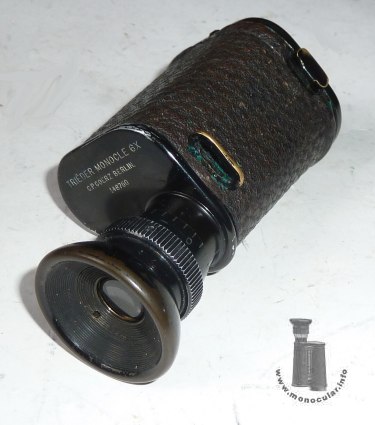
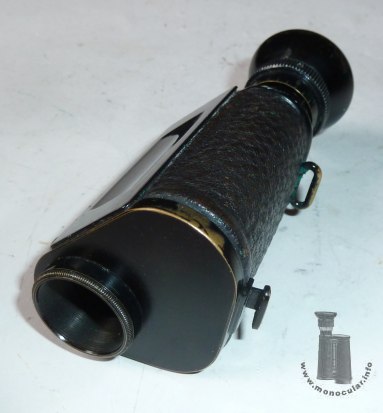
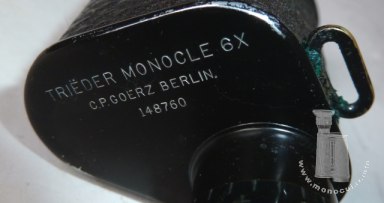
| Beim "Triëder Monocle" befindet sich die Seriennummer mit auf dem oberen schwarz lackierten Deckel des "Mantels" (h): hier 148760. Demnach müsste das Glas 1908 hergestellt worden sein. Dem Zeitraum entspricht auch die weitere Deckelbeschriftung nur mit der Vergrößerungsangabe "6x". Die komplett umlaufende Dioptrienskala ist bei Null und jeweils + und - Fünf markiert. Die Art der Befestigung der Augenmuschel durch einen inneren Gewindering (a) erlaubt auch, dass sich beim Fokussieren das Okular dreht, die Hartgummiaugenmuschel am Auge jedoch nicht, so das das Glas nicht von der Augenhöhle weg genommen werden muss. Wie beim Goerz 9x gibt es oben am Gehäuse eine von innen angeschraubte Trageriemenöse in Drahtbügelform und unten seitlich am Deckel (g) eine weitere zum Einhaken eines Riemenlochs, um ein Tragen ohne Schlenkern des Monokulars zu erlauben. Die Objektivlinse (d) ist um 10mm nach innen versetzt, so dass durch die Fassung eine Sonnenblende gegeben ist. | The serial number on the "Triëder Monocle" is inscribed on the top cover of the hosuing (h): here 148760. So, the glass must date from 1908. This production date also corresponds with the other inscriptions, i.e. only being marked with its magnification of "6x". The full dioptre scale is marked at zero and +/- five. The construction of an inner retainer ring (a) holding the eyecup allows to keep the eye to the eyecup while focusing, because only the eyepiece not the eyecup rotates. Just like Goerz 9x the housing of the 6x comes with a strap lug on the upper side of the housing - it is a wire lug screwed on the wall from the inside - and comes with another hook-like lug on the side rim of the lower cover plate (g) to attach the strap with some opening. This allows carrying the monocular without dangling around. The objective lens (d) is recessed by 10mm into the housing so that the frame builds a kind of rayshade. |
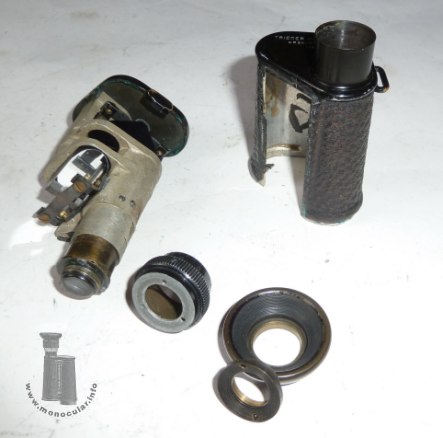
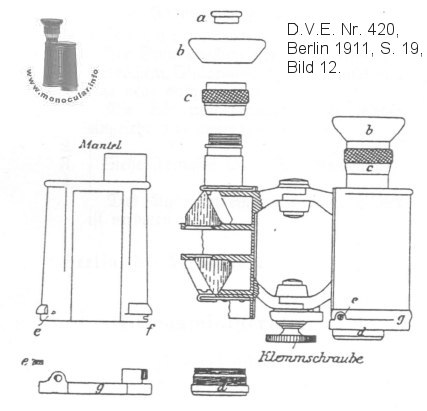
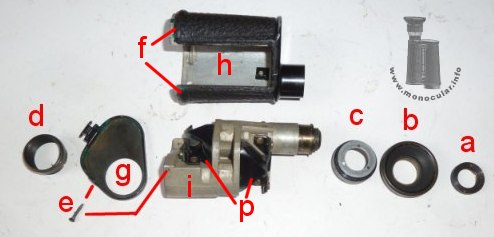
| Das 6x20 ist 100-160mm lang. Das Gehäuse ist oben 42x42mm und unten 47x47mm breit. Die rechteckige seitliche Haltewand misst 27x62mm. Die Objektivfassung ist 24,5mm im Durchmesser. Das Okularstück ist 20mm, der Fokussierungsring mit vertikaler Riffelung ist 26mm und die Augenmuschel 34mm im Durchmesser. Das Monokular wiegt 212g. | The 6x20 is 100-160mm long. The housing is 42x42mm wiede at its top and 47x47mm at its bottom. The rectangular side wall measures 27x62mm. The objective frame is 24.5mm in diameter. The eyepiece is 20mm, the focusing ring with its vertical knurling is 26mm, and the eyecup 34mm in diameter. The monocular weighs 212g. |
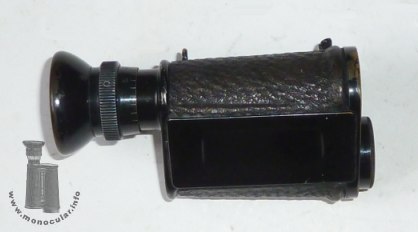
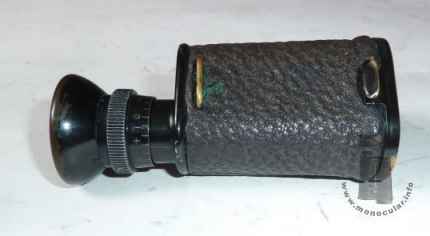
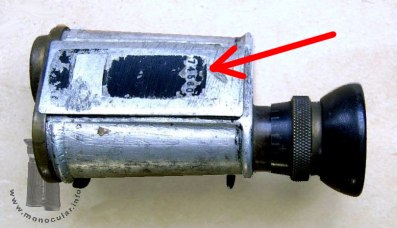
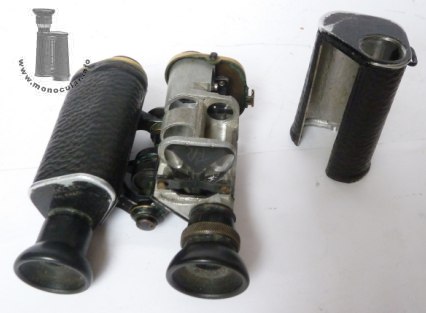
Fotos: Zeun

